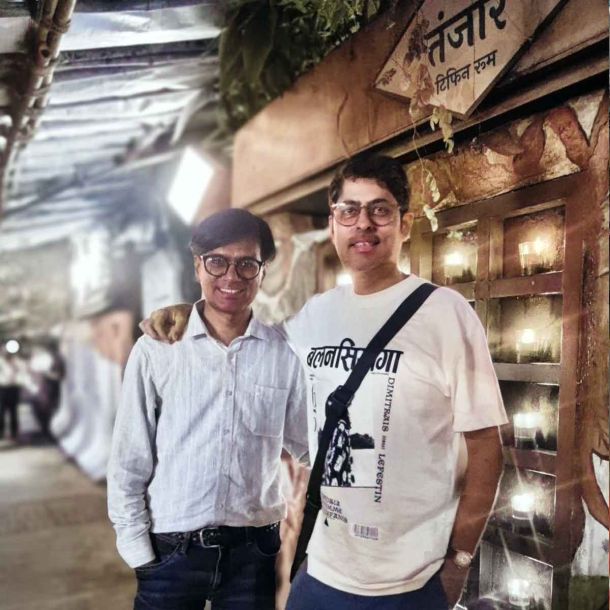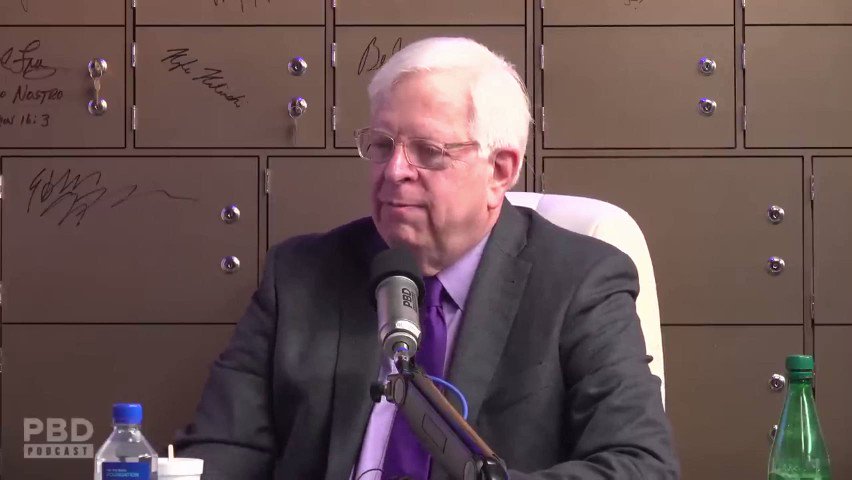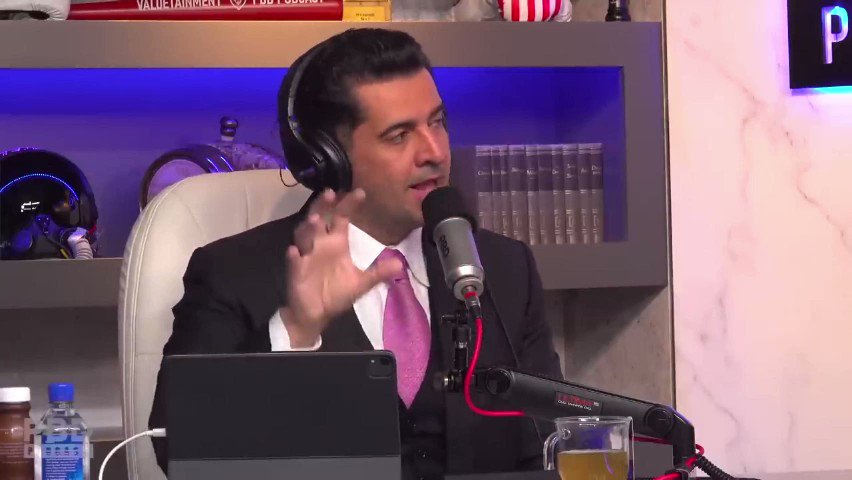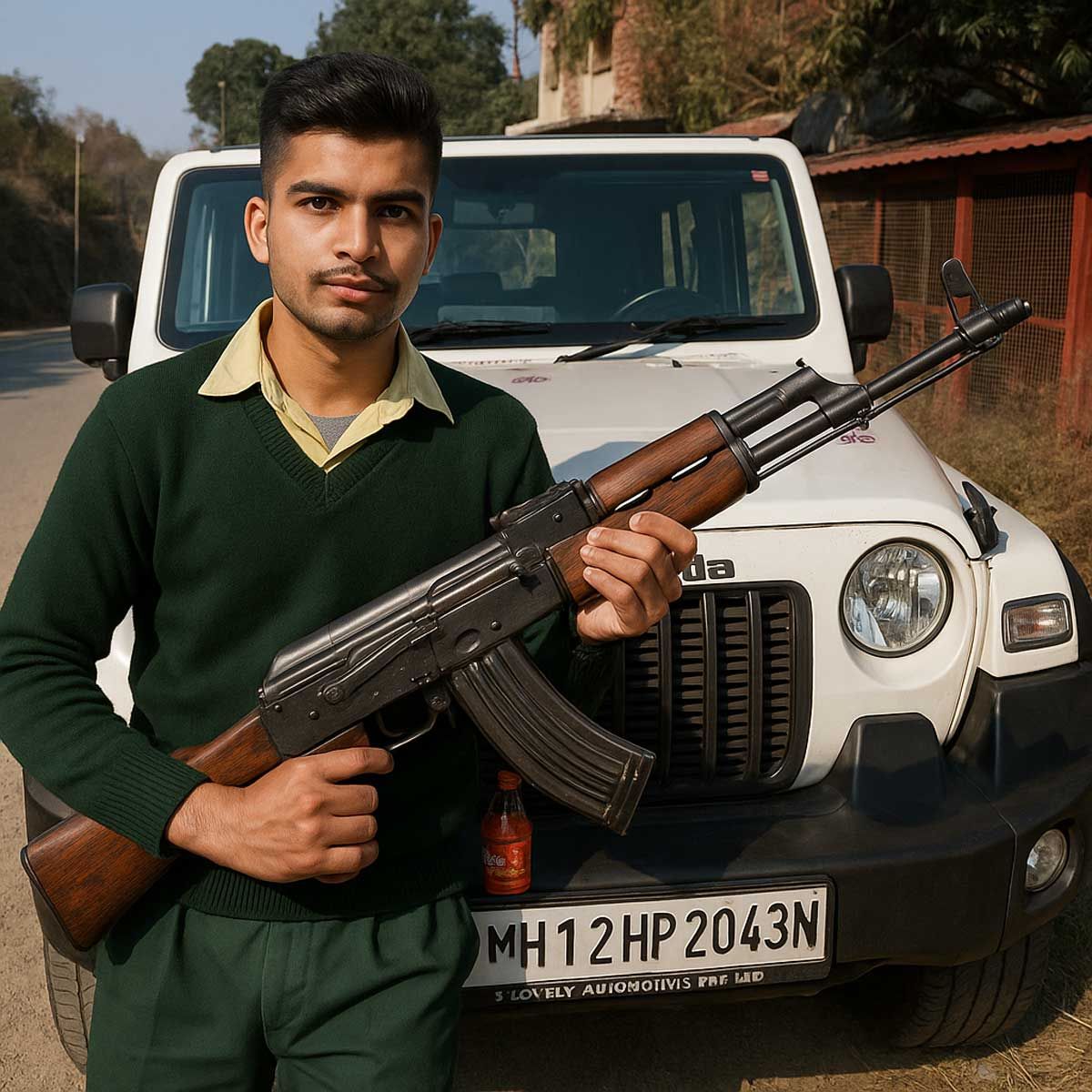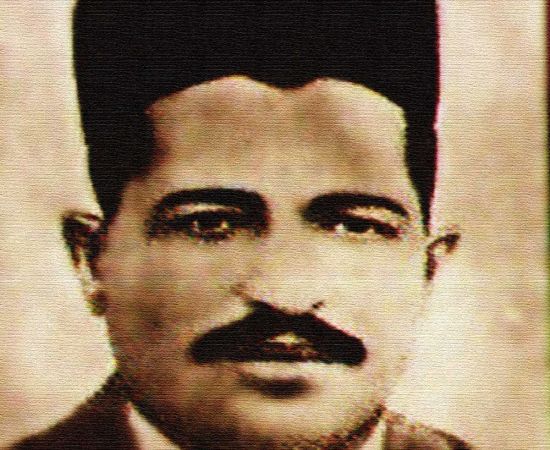More Coverage
Twitter Coverage
Satyaagrah
Written on
Satyaagrah
Written on
Satyaagrah
Written on
Satyaagrah
Written on
Satyaagrah
Written on
JOIN SATYAAGRAH SOCIAL MEDIA
Abhishek Bhardwaj, a 20-year-old college dropout from Himachal arrested for spying after police found sensitive military data on his phone and AK-47 visuals on his Facebook—exposing deep Pakistan-linked espionage threats inside India's rural heartland
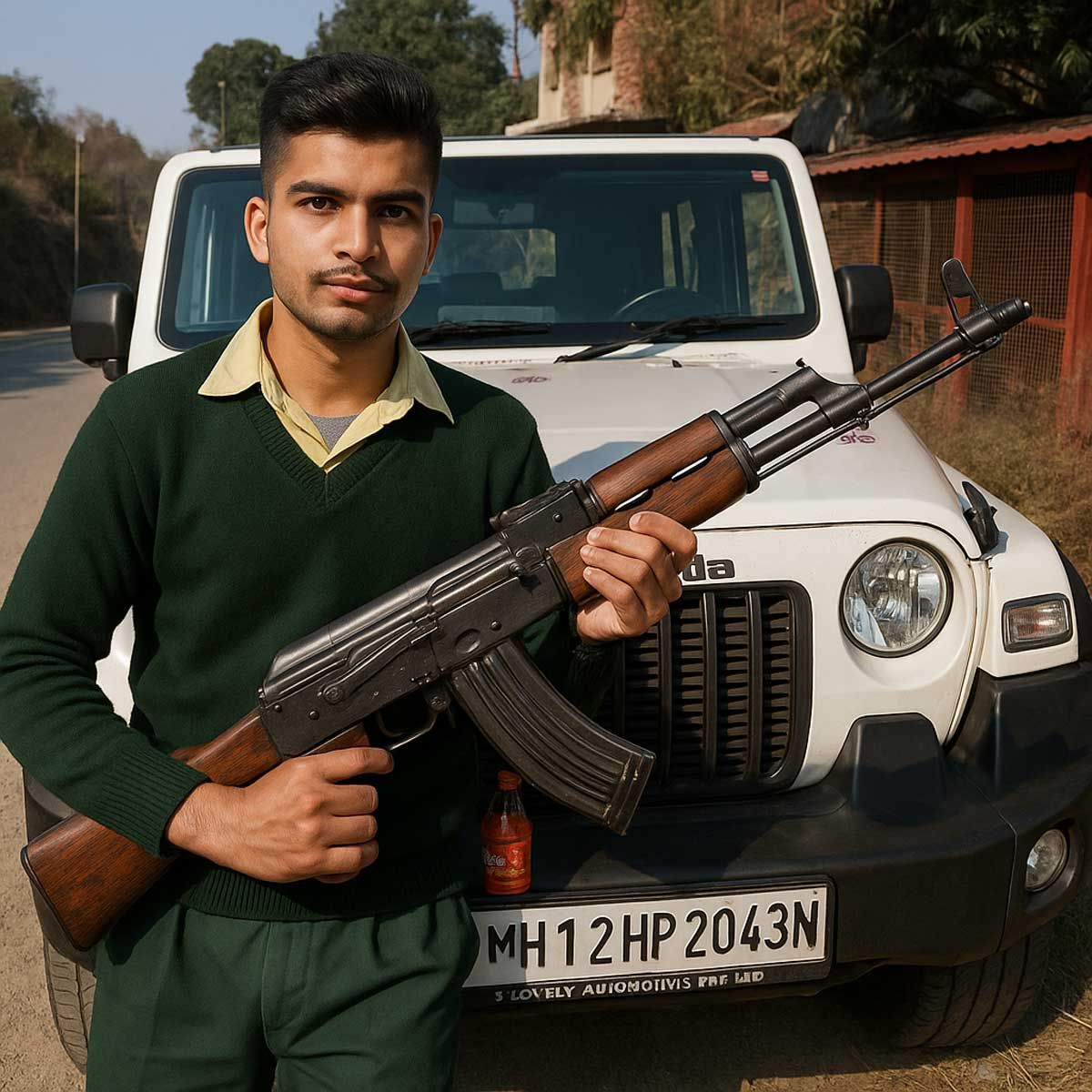
In late May 2025, intelligence inputs from central agencies warned that a young man in Himachal Pradesh might be spying for a foreign power. Acting on this tip-off, Himachal Police formed a special team under the Dehra Sub-Divisional Police Officer and placed the suspect under close surveillance. For several days, officers quietly monitored his activities – especially his online interactions – after learning he could be providing sensitive information to contacts in Pakistan. According to Dehra Superintendent of Police (SP) Mayank Chaudhary, “after we got an input about Abhishek’s activities, we kept him under close surveillance”. The suspect’s digital footprint was scrutinized during this period, as authorities gathered evidence and observed his social media behavior that appeared suspicious.
Early Morning Raid and Arrest
Before dawn on Wednesday, May 28, 2025, police decided to act on the intelligence. A raid was conducted at the suspect’s residence in Sukahar village in Dehra subdivision of Kangra district. The target was Abhishek Bhardwaj, a 20-year-old college dropout from the area. Officers took Bhardwaj into custody from his home without incident and brought him to the Dehra police station for questioning. The arrest was officially on suspicion of espionage – the culmination of the days-long covert investigation. “Kangra Police arrested [the] 20-year-old youth on suspicion of espionage following a tip-off,” India Today reported, confirming that Bhardwaj was detained and transferred for interrogation.
Once in custody, Bhardwaj was subjected to intensive questioning by the investigators. During this interrogation, police examined his belongings – most importantly, his mobile phone. What they discovered on the device would swiftly escalate the case.
|
Sensitive Content Uncovered on Phone
Upon inspecting Bhardwaj’s smartphone, officers found an array of sensitive and objectionable content stored on it. According to officials, the data uncovered was alarming in nature: it included photographs and videos of sophisticated firearms, ammunition stockpiles, and other military-related material that an ordinary civilian would have little reason to possess. One source described that “the phone contains pictures and video clips of ‘sophisticated weapons, armouries, and other material’” — content deemed highly unusual and sensitive from a national security standpoint. Investigators suspect some of these images may even depict restricted areas or equipment relevant to India’s defense.
Police immediately seized the device and its digital evidence for further analysis. “We have found sensitive videos and photos on his mobile phone, which has been seized and sent to the Forensic Science Laboratory (FSL) for further analysis,” SP Mayank Chaudhary said. By sending the phone for forensic examination, authorities aim to recover deleted files, trace communications, and confirm exactly what information might have been collected or transmitted. Several documents and digital files found in Bhardwaj’s possession were also secured as potential evidence. These initial findings of classified or defense-related content on the suspect’s phone were enough for police to move forward quickly with formal legal action.
The Accused: A College Dropout with a Suspicious Online Trail
As the investigation unfolded, more details emerged about Abhishek Bhardwaj. He is a 20-year-old college dropout from a modest background in Kangra. Sources indicate he comes from a Below Poverty Line (BPL) family – his father works as a private driver and his mother is a homemaker. Bhardwaj himself was unemployed, picking up occasional catering work at private events to make ends meet. By all accounts, he was an ordinary young man in the village – which makes the allegations even more striking.
Where Bhardwaj stood out was online. Investigators found that he maintained an extensive presence on social media, particularly Facebook and WhatsApp. In fact, the youth had over 3,000 friends on Facebook, an unusually large network for a person of his age and locale. Notably, a significant number of these online contacts were profiles based in Pakistan. Police say Bhardwaj appeared to be using social platforms to communicate with individuals across the border, raising red flags about the nature of those interactions.
One telling detail was Bhardwaj’s own posts. On his Facebook account, he had uploaded a short video that immediately drew scrutiny from investigators. In this clip, the young man’s name “Abhishek Bhardwaj” is artistically spelled out using images of bullets and cartridges, flanked on either side by graphics of guns – including AK-47 rifles. The video essentially stylized his name with weapon imagery. This militant-themed visual on his profile, accompanied by his extensive Pakistan-linked friend list, deepened suspicions about his proclivities. Such online activity suggests Bhardwaj might have been attempting to project a certain persona or interest in weaponry and military matters – potentially to signal like-minded contacts. Investigators noted that this social media behavior “heightened suspicions about his intentions” in the context of espionage.
|
Case Registered Under New Espionage Law
With incriminating material in hand, the Himachal Pradesh Police swiftly registered a criminal case against Bhardwaj. Late on May 28, after the phone search, an FIR was lodged at the Dehra police station, and the suspect was formally arrested for offenses against the state. Authorities have charged Abhishek Bhardwaj under Section 152 of the Bharatiya Nyaya Sanhita (BNS), 2023. (The BNS is India’s new penal code, enacted to replace the colonial-era IPC.) Section 152 of BNS pertains to “criminal acts that endanger the sovereignty, unity, and integrity of India” – effectively covering espionage, treason, or other anti-national activities. Police officials determined that the content on Bhardwaj’s phone and his alleged conduct fell squarely under this definition.
Notably, Section 152 BNS is a broad national security law; as of now, it is the primary charge in the case. If further evidence firmly establishes that Bhardwaj transmitted secret information to a foreign agent, investigators indicated that additional charges – including provisions of the Official Secrets Act, 1923 – could be added to the case. “If we find evidence of spying, relevant charges will be added in the FIR. The seized cell phone was sent for forensic examination,” SP Chaudhary explained. For the moment, the case is being pursued under the new BNS framework, which itself carries severe penalties for endangering national security.
By Thursday, May 29, the accused was expected to be produced before a local court in Kangra. Police sought his remand (custodial detention) to continue intensive interrogation in the coming days. Given the gravity of the allegations, the Himachal authorities are coordinating with central intelligence agencies to dig deeper into Bhardwaj’s contacts and activities.
What the Police and Officials Say
Himachal Pradesh Police officials have been cautious yet firm in their statements about the case. SP Mayank Chaudhary, who is heading the investigation in Dehra, confirmed the arrest and emphasized the nature of the evidence found. “Indeed, sensitive and objectionable material was found on the suspect’s mobile phone, which could endanger the sovereignty of the country,” Chaudhary told The Indian Express, “however, we have not yet found any conclusive evidence that he was directly involved in acts of spying”. This statement suggests that while the content in Bhardwaj’s possession is clearly of a classified or tactical nature, police are still determining whether he actively passed it to a foreign handler or was preparing to do so.
Chaudhary also detailed the genesis of the operation: after the tip-off was received, the suspect was put under watch for about a week. When his activities “raised serious red flags,” a decision was made to apprehend him. Another senior officer, Dehra DSP Raj Kumar, disclosed that during questioning the accused confessed to certain activities. According to DSP Raj Kumar, Bhardwaj admitted he had been sharing information through social media channels, presumably with his contacts abroad. This admission will be a key part of the investigation, although officials will seek to verify any claims he made by analyzing digital records and communication logs.
Police have not publicly revealed the exact nature of the “sensitive information” that Abhishek Bhardwaj allegedly handled. However, sources within the investigation hinted that it could include photographs of military installations, videos of weapon systems, or other security-related data that an ordinary person would not typically have. The material is now under forensic scrutiny. “While senior officers declined to divulge the exact nature of the sensitive content... a source said his phone contains pictures and video clips of sophisticated weapons, armouries, and other material,” one report noted. The ongoing forensic analysis and questioning will determine whether Bhardwaj himself obtained this content (for instance, by visiting and filming restricted areas) or if it was sent to him by someone as part of a larger espionage pipeline.
Importantly, the police have made it clear that they are treating this case with utmost seriousness but also with caution until all facts are confirmed. The Himachal Pradesh Director General of Police (DGP) has been kept informed of the probe’s progress, and central agencies like the Intelligence Bureau are reportedly assisting in piecing together Bhardwaj’s overseas connections. Officials have pointed out that a full picture – including the motive (whether monetary, ideological, or coerced) and the extent of classified data leaked – will only emerge after a thorough investigation and forensic audit of the seized electronics.
Links to Foreign Agents and Possible Motives
Preliminary evidence strongly suggests that Abhishek Bhardwaj was in touch with Pakistani intelligence operatives through online means. Police say his social media profiles and messaging app groups included members from Pakistan, and that he “was allegedly using social media to communicate with Pakistani agents” about sensitive matters. The fact that he had curated a large number of Pakistani Facebook friends is one indicator; investigators are now trying to identify which of those contacts were actual handlers or conduits providing him instructions.
According to a local news report, Bhardwaj allegedly sent sensitive information via social media to contacts across the border, essentially acting as a conduit for relaying data to Pakistan. The content of this information is still under investigation, but given what was found on his phone, officials suspect it relates to India’s defense or strategic installations. It is not yet clear how Bhardwaj first came in contact with foreign agents. In many recent espionage cases, Pakistani handlers have used fake identities on Facebook to befriend and groom targets in India, sometimes luring them with money or ideological appeal. Whether a similar modus operandi was used to ensnare Bhardwaj is a key question the agencies are exploring.
As for Bhardwaj’s motive, no definitive statement has been made. Being unemployed and from a low-income family, one possibility is that he was enticed by financial rewards in exchange for information. Another possibility is ideological influence or vanity – the glamour of being involved in “secret” work. The video he posted with his name and AK-47 graphics hints at a fascination with the military or weaponry, which could have made him an easy target for recruitment by a foreign spy handler. Officials have not ruled out the involvement of a larger network that may have directed him. All his communications and financial records (if any) are being scrutinized to determine if he received instructions or payments from across the border. Investigators will also interview his friends and acquaintances to see if he recruited or was recruiting others, though no such evidence has surfaced publicly so far.
Regional Security Implications and Broader Crackdown
The arrest of a suspected spy in Himachal Pradesh – a state that rarely features in espionage headlines – has raised concerns about the breadth of espionage networks in India. Kangra, where the incident took place, is not on an international border, yet the case shows that even hinterland regions are not immune to espionage operations. Himachal Pradesh Police officials noted that this is the first such espionage-related arrest in the state as part of a recent nationwide crackdown. That crackdown was catalyzed by “Operation Sindoor,” a major anti-terror operation India launched on May 7, 2025, following a deadly terror attack in Pahalgam, Jammu & Kashmir. Ever since Operation Sindoor, Indian security agencies have been on high alert for internal spies who might be leaking information to the enemy during the heightened tensions.
Indeed, Bhardwaj’s arrest did not occur in isolation. Over the course of May 2025, authorities across multiple states have uncovered a web of alleged ISI-linked espionage activities. At least seven suspects have been arrested in neighboring Punjab and Haryana in the weeks following Operation Sindoor on similar charges of spying for Pakistan. These include individuals from various walks of life – for example, a 33-year-old YouTuber and travel blogger in Haryana was arrested on May 16 for allegedly passing defense information to Pakistani handlers. In Uttar Pradesh and Rajasthan too, arrests have been made: one case involved a government clerk in Rajasthan’s Jaisalmer who was accused of spying for the ISI in the same timeframe. In total, at least 11 people were caught within just a few days in mid-May on allegations of espionage, exposing a covert network that was leaking sensitive military and security information to foreign operatives.
This broader pattern suggests a coordinated espionage network targeting India’s security apparatus, with tentacles spread across different states. The Himachal case adds a new dimension, revealing that even a young college dropout far from the typical centers of military activity can be groomed or tempted into espionage. It underscores that regional security cannot be taken for granted; even areas perceived as peaceful can harbor individuals working against national interests. Intelligence agencies believe that Pakistan’s Inter-Services Intelligence (ISI) has been aggressively attempting to recruit informants in India through social media, honey traps, and financial inducements, especially after India’s recent counter-terror operations. The use of social media by Bhardwaj aligns with a known pattern where spies operate remotely via the internet to pass on information.
For Himachal Pradesh, an otherwise tranquil border state (it borders only Tibet/China on one side and Punjab on another), this incident is a wake-up call. The state does host some military cantonments and sensitive installations in its vicinity, and the Kangra district is not far from key Army and Air Force bases in neighboring Punjab. Any leak of information from this region could have serious implications for the security of those facilities. Officials have indicated that security has been ramped up and counter-intelligence efforts intensified in the area after this arrest, to ensure no other moles are operating undetected.
“The arrest has serious implications for regional security,” a senior officer commented, noting that information shared by even low-level operatives can compromise strategic operations if it reaches enemy hands. Moving forward, both state police and national agencies are expected to increase public awareness and monitoring to prevent vulnerable youth from falling prey to online recruiters. Community outreach may be undertaken in Kangra and surrounding districts, warning young people about suspicious contacts on social media and urging citizens to report unusual activities.
Conclusion
The chronology of the Kangra espionage case – from an intelligence tip-off to a predawn raid, the discovery of classified content on a phone, and the unmasking of a seemingly average youth as a potential spy – reads like a plot from a thriller. But it is a stark reality playing out in India’s hinterlands. Abhishek Bhardwaj’s arrest highlights how modern espionage is no longer confined to clandestine meetings or border infiltrations; it can proliferate through Facebook friendships and WhatsApp chats in the digital age. As the investigation presses on, authorities will seek to unravel the full extent of Bhardwaj’s activities: what secrets he accessed, who his handlers were, and how he was induced into this dangerous game.
Already, this case has contributed to a broader understanding of the spy network operating in North India. The findings here may help connect dots with other recent espionage busts – possibly revealing common recruiters or methods – and strengthen the overall counter-intelligence response. The Himachal Police, in coordination with national agencies, are determined to pursue every lead. Charges under Section 152 of BNS have been lodged, and if evidence warrants, the stringent Official Secrets Act will come into play, which could potentially land the accused behind bars for years, if not for life.
For now, Bhardwaj remains in custody as investigators sift through the forensic data. His story – a college dropout allegedly turned pawn of a foreign spy master – serves as a cautionary tale. It underlines the need for vigilance at all levels of society, and for robust cyber-intelligence to detect espionage footprints early. National security officials have reiterated that any individual – no matter how unassuming – can pose a risk if co-opted by a hostile intelligence agency, and they affirm that the fight against such espionage is being intensified in the wake of these incidents.
As more facts come to light in the Kangra spy case, this investigative story will continue to develop. What remains unequivocal is that the guardians of India’s security are on high alert, and those found betraying the nation’s trust will be dealt with under the full force of the law. The arrest in Himachal Pradesh is both a significant success in this ongoing crackdown and a sobering reminder of the invisible battles being waged beyond the public eye to keep the country safe.
 Support Us
Support Us
Satyagraha was born from the heart of our land, with an undying aim to unveil the true essence of Bharat. It seeks to illuminate the hidden tales of our valiant freedom fighters and the rich chronicles that haven't yet sung their complete melody in the mainstream.
While platforms like NDTV and 'The Wire' effortlessly garner funds under the banner of safeguarding democracy, we at Satyagraha walk a different path. Our strength and resonance come from you. In this journey to weave a stronger Bharat, every little contribution amplifies our voice. Let's come together, contribute as you can, and champion the true spirit of our nation.
 |  |  |
| ICICI Bank of Satyaagrah | Razorpay Bank of Satyaagrah | PayPal Bank of Satyaagrah - For International Payments |
If all above doesn't work, then try the LINK below:
Please share the article on other platforms
DISCLAIMER: The author is solely responsible for the views expressed in this article. The author carries the responsibility for citing and/or licensing of images utilized within the text. The website also frequently uses non-commercial images for representational purposes only in line with the article. We are not responsible for the authenticity of such images. If some images have a copyright issue, we request the person/entity to contact us at This email address is being protected from spambots. You need JavaScript enabled to view it. and we will take the necessary actions to resolve the issue.
Related Articles
- "The fall of Madhuri Gupta": From a trusted diplomat in Islamabad to a convicted spy for Pakistan’s ISI—wasn't just betrayal, but a haunting reminder of how love, loneliness, and systemic cracks can sabotage a nation from within, leaving wounds unhealed
- New York Times looks for anti-Hindu, anti-Modi candidates to spread propaganda: Dissecting the dangerous job opening
- Exposed: Nitasha Kaul's ban from India, justified by her deep ties with anti-India groups & spreading venom, from testifying against India in US Congress to associating with extremist organizations, her actions reveal an agenda far from scholarly debate
- "बँटवारा": Arfa Khanum Sherwani calls for Sir Syed Ahmed Khan’s leadership, sparking controversy as Khan, founder of AMU and proponent of the Two Nation Theory, fueled the Hindu-Muslim divide with Islamists aiming to make India an Islamic nation by 2047
- "A lie with a purpose": At the 45th Prix Européen de l’Essai, controversial author Arundhati Roy amplifies anti-India rhetoric, distorting facts on Godhra, CAA, Article 370, while unabashedly endorsing BBC, Hindenburg, and OCCRP's divisive narratives
- Misleading claim in NCERT textbook about Mughal emperors giving grants for temple repairs will not be removed: Delhi HC
- Dangerous plots of Khalistan uprising and Hindu genocide, hurling abuses to Hindu Gods, arrest of Hindus for ‘blasphemy’ when retaliating - The menacing truth of underbelly of Clubhouse
- "Misfortune or Malicious Motive": Kerala reels from blasts at a religious meet following a polarizing pro-Hamas rally, with over 40 injured and a life lost, the shadows of discord loom, as investigations seek to unveil the roots of this unfolding tragedy
- "एक और गयो": Omidyar to quit India - Omidyar like Sorors is a billionaire known as regime change operator conduiting funds through "philanthropy", ONI invested $500mn in India in last one decade, MHA has been taking head-on with NGO biggies relentlessly
- "Andolanjeevi": Case registered against ‘activist’ Medha Patkar, who gained notoriety in a cheating case of “Narmada Bachao Andolan,” accused of misusing funds of educating tribal children, received donation in crores for her NGO
- Saba Naqvi infers that re-settling Kashmiri Pandits in the valley decades after the genocide was perpetrated against them by Islamic terrorists is a part of the ‘Hinduisation’ project: Mirrors Jihadis and Islam extremists
- Jawaharlal Nehru University A Centre Of Excellence, But It Must Get Rid Of The Anti-National Forces: JNU at At A Dangerous Inflection Point
- SFJ terrorist of radical Khalistani movement arrested in Germany due to Diplomatic pressure. Can Canada and UK be next?
- "We are Mughals, we have ruled India for centuries": Nusrat Mirza claimed he spied on India but due to lack of good leadership in Pakistan it was not used, was invited by Hamid Ansari, is friends with all editors of Urdu papers in India
- "रोड पे तो आना ही पड़ेगा": Sarwar Chishti, notorious for inciting Muslims and supporting economic boycotts against Hindus, now targets the Waqf Amendment Bill 2024, threatening nationwide unrest with his inflammatory speeches and dangerous provocations

